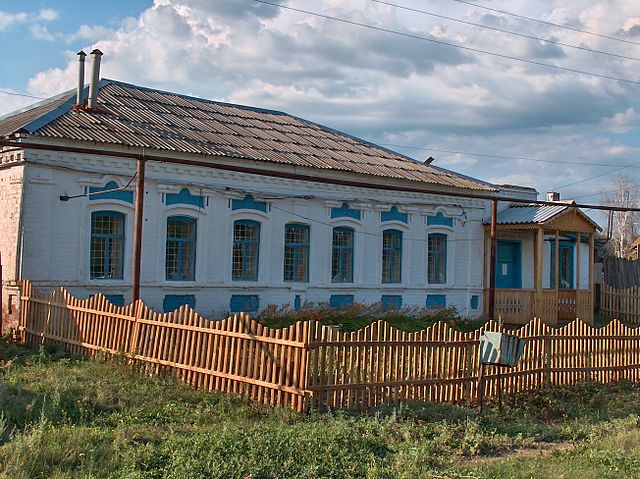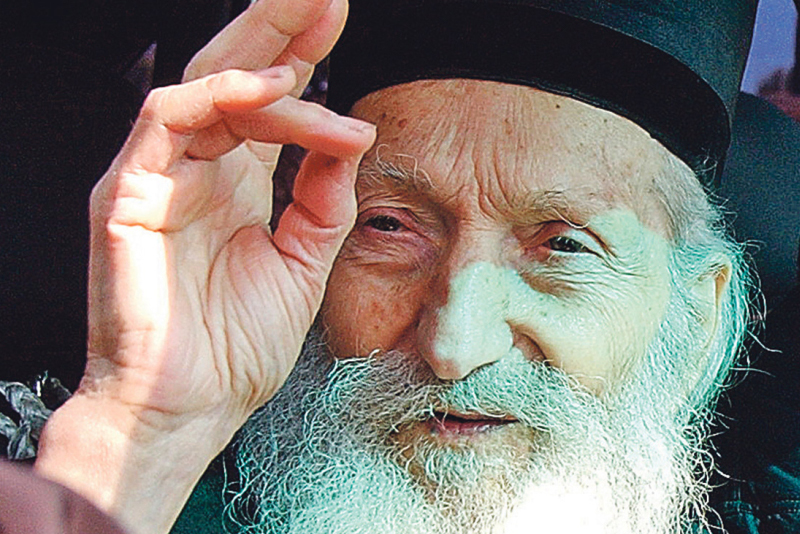
Think of a man without arms and legs, living a full-fledged creative life. For most people this is our contemporary Nick Vujicic, an Australian writer and orator, inspiring thousands of people today. There are, however, other examples of such fortitude in history. Grigory Zhuravlev, a 19th century Russian icon painter, lived a long, happy and creative life, proving that everything is possible with faith in God.
Childhood
In 1858, in the village of Utyovka near Samara, an armless, legless cripple was born into a carpenter’s family. The baby’s arms and legs were atrophied. The boy’s grieving mother wanted to drown herself together with her son. But her father, Pyotr Vasilyevich Traikin, stopped her, saying that he would raise his grandson himself.

Since childhood, Grisha amazed everyone, crawling on his knees into the yard, holding a twig in his mouth and drawing people and animals on the ground with it. At the age of nine, his grandfather began to take him to school, using a sled in winter, a trolley in summer or, sometimes, simply carrying the boy on his back. Two years later Grisha’s grandfather died, and the teacher from the county school began to visit the Zhuravlevs and give Grisha lessons.
The boy became used to reading. His handwriting was wonderful, despite the fact that he wrote holding the pen and pencil in his teeth. Every now and then his fellow villagers would ask the boy to write petitions or messages to relatives for them.
Vocation
But most of all Grisha liked to draw. He firmly decided to become an iconographer and ignited his whole family with faith in his vocation to paint icons. At the age of fifteen, Grigory’s brother Afanasiy took him to Samara, to take lessons from the local icon painter Travkin. The icon-painter was struck by the unusual student so much that he allowed him to stay in his house. Just a few lessons were enough for Grigory, so the brothers bought paints and brushes and returned home. After that Grisha learned everything himself. That included more than just painting icons. Over time he even graduated from the Samara men’s gymnasium as an external student.
Five years later, Zhuravlev decided to give several of his icons to the clergy of Samara city, after which icon orders began to come to the self-taught icon painter. Soon the Provincial Zemstvo Assembly appointed Grigory an annual pension of 60 rubles, which at that time was decent help in the villager’s life.

The whole family helped Grisha, preparing boards, selecting brushes, and taking the finished works to Samara. The governor Sverbeev himself warmly patronized him and in 1884 even fulfilled his request to forward an image of St Nicholas to the heir to the throne Nikolai Alexandrovich along with a letter explaining that Grigory wrote this icon at the admonition of Almighty God, Who allowed him into into this world and gave him the gift of icon-painting. “Then came the movement of my mouth, with which I control my skill at the Lord’s command…” the village iconographer wrote to the future emperor. The emperor’s family accepted the icon with gratitude, and now it is kept in the Hermitage museum.
When in 1885 the construction of a large stone church began in Utyovka, its walls were painted according to Zhuravlev’s sketches, while Grigory painted the ten-meter dome himself. Every morning he was tied to a cradle-chair and lifted to a height of twenty-five meters, where he painted holy images, holding brushes in his teeth until his jaws clenched. Grigory spent several years in these labors, developing bleeding ulcers on his back and nape. His vision deteriorated greatly, his lips bled and his front teeth were worn away.
In 1892 the work was completed, and the Trinity Church was consecrated.
Memory
Grigory Zhuravlev died in February 1916 from consumption. With the blessing of the ruling bishop, he was buried in the courtyard of the church that he had painted.

After the revolution, the church was closed, and the building was used as a granary. When in 1989 it was returned to the believers, it was in ruins – without a bell tower, with a destroyed dome and a collapsed right wall. It was, however, eventually restored and consecrated One by one Zhuravlev’s icons began to return to their original tenement in various ways.
The once lost cross on the grave of the icon painter was also restored. Eight bells were installed on the new bell tower, and the largest was named Gregory.
***
It is not known exactly how many icons Zhuravlev painted and how many of them survived. His image of Pope Leo l is kept in the Church-archaeological study of the Holy Trinity St Sergius Lavra; five of his icons – “Seeking Out of the Lost”, “Milk-giver”, “Quick to Hearken”, “Saints Cyril and Methodius” and the “Holy Equal-to-the-Apostles Myrrh-Bearing Women” are in the collections of the diocesan and regional museums of local lore in Samara. One more image of Sts Cyril and Methodius written by Grigory was discovered in 1963 in Serbia.
In Utyovka, the memory of Grigory Zhuravlev is carefully preserved: the artist’s museum has been opened, while the writer Alexander Malinovsky and the local history teacher Kuzma Danilov have built up a collection of biographical material about him. The story of an icon painter who created “not made by hand” images is now being told to Samara children at their Orthodox culture classes in school.



Translated by The Catalogue of Good Deeds
Source: https://foma.ru/grigorij-zhuravlev-russkij-nik-vujchich-o-kotorom-my-ne-znaem.html





Good to read this; thank you. It gives different perspectives on how each of us perceives the Our Jesus & the Orrhodox Church in terms of our upbringing. Are you acquainted with Fr (Abba) Moses Berry? He is an African American Orthodox priest in Missouri & his parish is Unexpected Joy. He & his presvytera are gems.
Thanks for sharing, Jennifer. Very interesting.